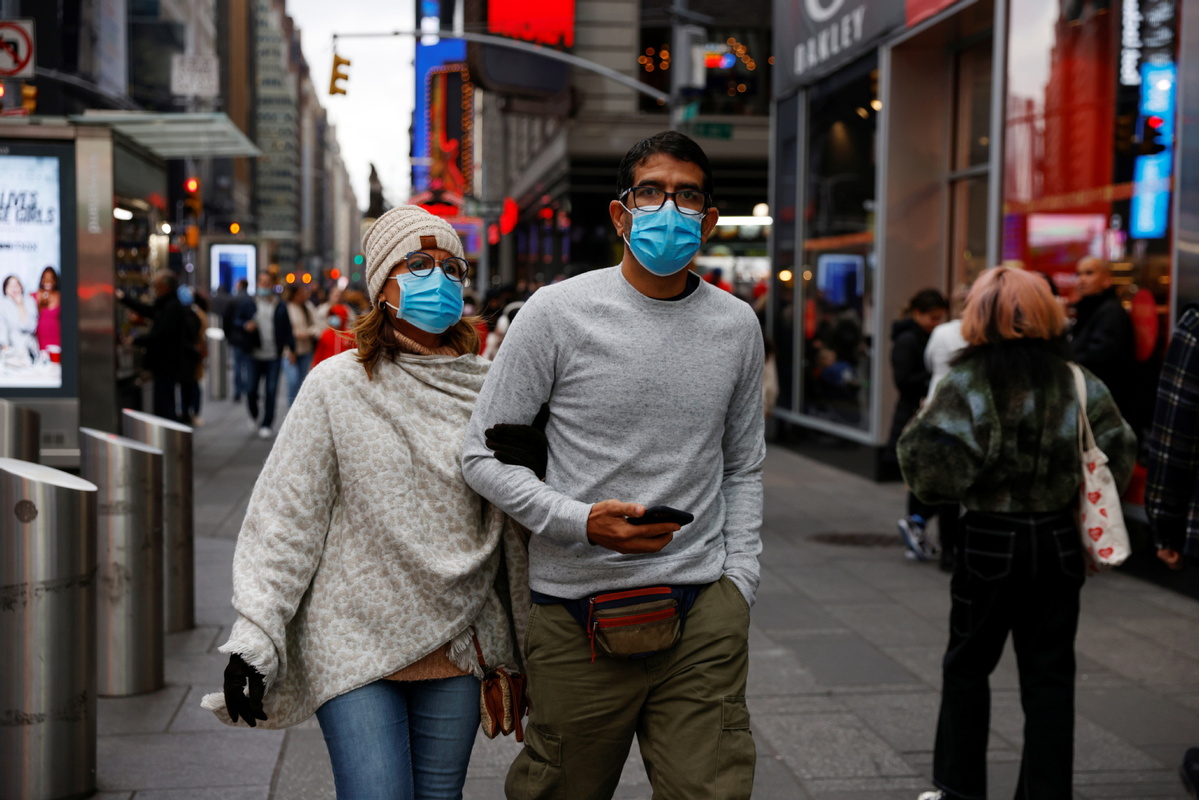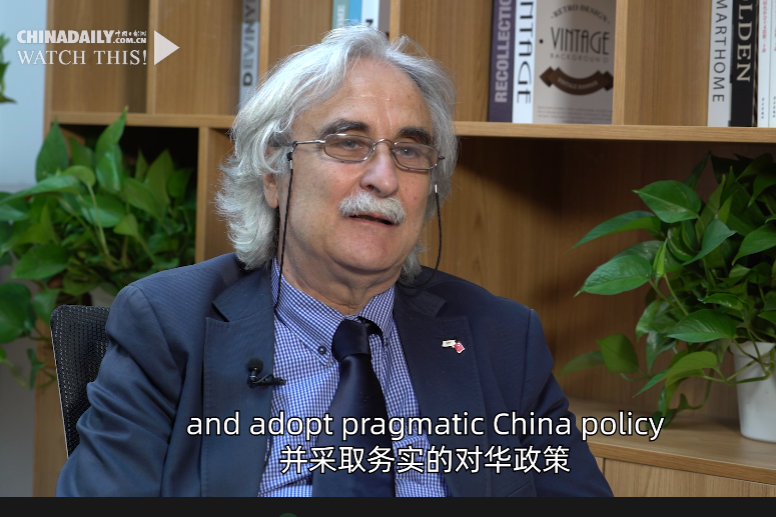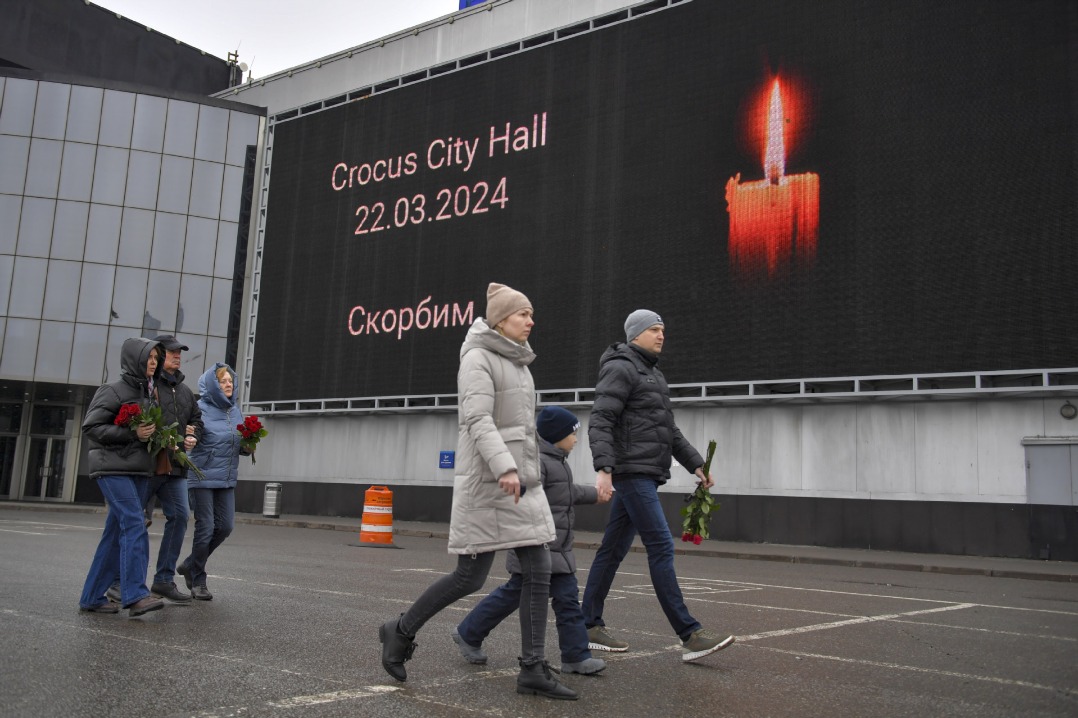2020 US Census undercounted some minority groups
By AI HEPING in New York | China Daily Global | Updated: 2022-03-11 10:37

The federal agency that counts the US population got some numbers wrong for the 2020 census, undercounting black, Latino and Indigenous populations while overcounting white and Asian people, the Census Bureau said Thursday.
The miscount was about 0.24 percent of the total US population, or about three-quarters of a million people, the Census Bureau said. In 2010, the census — which is taken every 10 years — missed 0.01 percent of the national population.
Despite the miscounts, the overall population count of 323.2 million was largely accurate, the Census Bureau said.
The miscounts released Thursday are based on the census' post-enumeration survey, a follow-up with some people used as a tool to measure who was missed in the census.
Beyond illustrating the racial make-up of America, results of the census help determine how many House of Representative seats and Electoral College votes each state gets and the distribution of federal aid for public services, including education, health care and transportation. Undercounting communities results in reduced political representation on local, state and federal levels.
Census Bureau Director Robert Santos said during a webinar on Thursday that the results are "fit to use" for redistricting and are of "high quality".
Not everyone agreed.
The largest undercount was for Hispanic people — 5 percent — who are now the nation's largest minority group.
Arturo Vargas, CEO of NALEO Educational Fund, said at a news conference that throughout his 35 years of tracking the census, he had never seen such a significant undercount in the Latino population.
"As you can imagine, we are just terribly — I can't even find the word right now — upset about the extent of the Latino undercount," he said.
"These numbers are devastating. Once again, we see an overcount of white Americans and an undercount of black and Hispanic Americans," said National Urban League CEO Marc Morial at a press conference immediately after the Census Bureau presentation. "I want to express in the strongest possible terms our outrage."
Though the margin of those not counted wasn't statistically significant, in addition to the miscount for Hispanics, about 3.3 percent of black people and 0.9 percent of American Indians and Alaska Natives were undercounted. The overcounts were 1.6 percent for non-Hispanic whites and 2.6 percent for Asian Americans.
There were other under and overcounts. The most significant age undercount — 2.8 percent — was for children from newborn to 4 years old, a group traditionally recorded at lower than actual levels.
Men who were 50 or older were overcounted by 0.6 percent and women of the same age by 2.6 percent. Homeowners were overcounted by 0.4 percent and renters undercounted by 1.5 percent.
The bureau said the quality of the 2020 census data is quite remarkable amid all the challenges.
One of the biggest obstacles was the COVID-19 pandemic, which suspended in-person door-knocking operations in March 2020 and only restarted in the late summer.
"We had families of all races and ethnicities, but especially among Latinos, who were really suffering during this period. They were out of work. There were issues of housing stability, there were hunger issues and so forth. And I think that that plays a role in the ability to (participate)," Santos said.
In 2019, the Trump administration proposed adding a question to the 2020 census: "Is this person a citizen of the United States?" The proposal, which eventually failed, led to concerns that many Latinos and immigrants wouldn't return their census forms out of fear that their responses could be used against them.
Santos said discussion of the potential citizenship question may have affected participation by some people, as likely evidenced by the wider Latino undercount.
"The Census Bureau's own research in terms of focus group research raised concerns very early on about the inclusion of a citizenship question. So, therefore, all of the publicity surrounding the efforts to place it on (the census) may well have had an impact," he said.
The 2020 census figures released in August showed that white people remained the nation's largest racial group, even though that population decreased by 8.6 percent since 2010.
By comparison, the number of Asian Americans surged by about 36 percent, the Hispanic community jumped by about 23 percent and the black population grew by about 6 percent.























